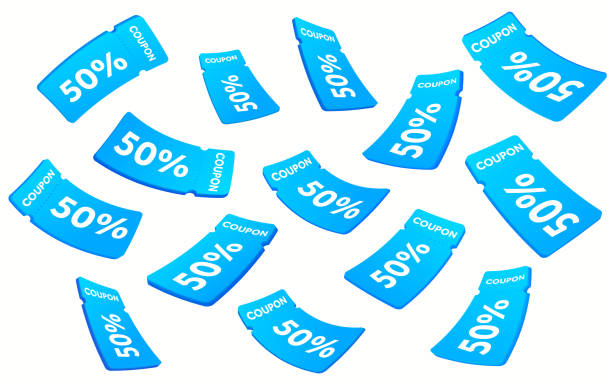Social media is a double-edged sword. On one hand, it allows brands to engage with their audience, build communities, and promote products in ways that were unimaginable just a decade ago. On the other hand, it also exposes businesses to potential crises that can damage their reputation in a matter of minutes. Social media disasters can happen to any organization, regardless of size or experience, and the ripple effects can be costly.
If you’re a business owner or marketer, you’re probably aware of the risks and rewards that come with social media. The good news is that by implementing the right strategies, you can protect your brand from online pitfalls while still leveraging the power of social platforms. In this blog post, we’ll explore practical strategies to prevent social media disasters and ensure that your brand’s presence online remains strong, positive, and effective.
Why Social Media Disasters Happen
Before diving into strategies for prevention, it’s crucial to understand why social media disasters occur in the first place. A social media disaster could be anything from a poorly-worded post, an insensitive comment, to a full-blown viral crisis. The speed at which content spreads on social platforms can escalate these problems rapidly. Some common reasons behind social media disasters include:
- Lack of oversight: Without proper monitoring, posts may go live with errors or tone-deaf messaging.
- Reactive responses: In the heat of the moment, emotionally charged replies can worsen a situation instead of calming it down.
- Miscommunication: When different teams within a company are not aligned on messaging, mixed signals can confuse your audience.
- Automation gone wrong: While social media automation is helpful, it can backfire if not carefully planned. Pre-scheduled posts can go live during inappropriate times, such as during a national tragedy.
- User-generated content: Encouraging followers to create content related to your brand can backfire if not moderated, as it might attract offensive or controversial submissions.
Understanding these root causes can help you devise strategies to avoid them, keeping your brand in a positive light.
1. Establish a Clear Social Media Policy
One of the most effective ways to prevent social media mishaps is by establishing a comprehensive social media policy for your team. A well-thought-out policy provides clear guidelines for employees who handle the company’s accounts. Key elements of a social media policy should include:
- Tone and voice: Define your brand’s voice and ensure consistency across all platforms. Whether you’re humorous, professional, or conversational, make sure that your tone aligns with your brand’s values.
- Approval process: Ensure that posts, especially those related to sensitive topics, are vetted by multiple team members before they go live.
- Dos and don’ts: Outline what is acceptable to share and what is not. This includes avoiding politically charged topics, controversial opinions, or anything that could offend your audience.
- Response protocols: Make sure everyone on the team knows how to respond to both positive and negative comments, as well as what to do in case of a crisis.
Having a clear social media policy can reduce the chances of impulsive or damaging posts from going live.
2. Monitor Activity Constantly
Social media moves fast. Posts, comments, and user interactions are happening around the clock, and even a small error can spiral into a disaster if not caught early. That’s why continuous monitoring is crucial. Here’s how to ensure nothing slips through the cracks:
- Use monitoring tools: Tools like Hootsuite, Sprout Social, or Buffer can help you track mentions, comments, and brand-related hashtags across multiple platforms. This enables you to respond quickly to any negative feedback or potential issues.
- Have a dedicated team: Assign a team or at least one person to monitor social media activity in real time. This way, you can stay on top of any emerging concerns or inappropriate content before they escalate.
- Set up alerts: Set notifications for specific keywords, phrases, or hashtags that are commonly associated with your brand. This ensures that you’ll be immediately aware of any posts or discussions where your brand is mentioned, whether positively or negatively.
By staying vigilant, you can respond quickly to any brewing issues and prevent them from snowballing into a full-blown crisis.

3. Plan for Crises in Advance to Avoid Social Media Disasters
No matter how carefully you plan, crises can happen. The best way to handle them is to have a plan in place before they occur. Your social media crisis plan should include:
- Crisis team: Identify the individuals responsible for handling a crisis. This could include social media managers, public relations professionals, and legal advisors.
- Pre-approved responses: Draft responses for various crisis scenarios ahead of time. This ensures that you can respond quickly without the risk of writing emotionally charged or poorly thought-out messages.
- Escalation protocol: Determine how and when a situation should be escalated to higher-ups or different departments.
- Post-crisis reflection: Once the crisis is over, hold a debriefing session to discuss what went wrong, what worked, and how you can improve in the future.
Having a solid crisis plan in place can mitigate damage and help you maintain control over the narrative during a social media emergency.
4. Think Before You Post to Avoid Social Media Disasters
It may sound simple, but thinking before you post can prevent most social media disasters. Encourage your team to take a moment to review the following checklist before hitting “publish”:
- Is the post aligned with our brand values?: If it doesn’t reflect your company’s mission and values, it’s probably not worth posting.
- Could this offend someone?: If there’s even a small chance that the post could be taken the wrong way, reconsider.
- Is the timing appropriate?: Consider current events and the social climate before posting. A lighthearted tweet might be tone-deaf if posted during a tragedy.
- Have I double-checked for errors?: Typos, factual inaccuracies, or broken links can make your brand look unprofessional and careless.
This quick mental check can save you from making avoidable mistakes.
5. Engage with Your Audience to Avoid Social Media Disasters
One of the best ways to build goodwill and prevent social media disasters is by genuinely engaging with your audience. When people feel like they are being heard, they are less likely to turn a minor complaint into a public spectacle. Here’s how to engage effectively:
- Respond promptly: Timely responses show that you care about your customers. Whether it’s a question or a complaint, don’t leave users hanging for too long.
- Be transparent: If you’ve made a mistake, own up to it. Apologizing sincerely and taking corrective action can turn a potential disaster into an opportunity to build trust.
- Highlight user-generated content: Encourage your followers to share their experiences with your brand and highlight positive stories. This not only builds community but also strengthens your online reputation.
By actively engaging with your audience, you can prevent negative situations from escalating and create a loyal community around your brand.

6. Review and Learn From Mistakes to Avoid Social Media Disasters
Mistakes are bound to happen. The key is to learn from them. After any social media issue, big or small, take time to review what went wrong and how to prevent similar situations in the future. Conducting a postmortem analysis can help you identify:
- Gaps in your process: Were posts properly vetted? Was the crisis plan followed? Did the response team act quickly enough?
- Improvement areas: Determine what you could do better next time, whether it’s improving communication, tightening your social media policy, or refining your approval process.
- Successes: Don’t forget to acknowledge what worked well during the crisis. By recognizing successes, you can replicate effective strategies in future situations.
Constantly reviewing and refining your approach will help your team grow stronger and more resilient over time.
Conclusion: Protect Your Brand, Build Trust
In today’s fast-paced digital world, preventing social media disasters isn’t just about protecting your reputation—it’s about building and maintaining trust with your audience. By establishing clear policies, monitoring activity, planning for crises, engaging with your followers, and learning from mistakes, you can navigate social media successfully while avoiding potential pitfalls.
Remember, social media is a powerful tool that can bring tremendous value to your brand. With the right strategies in place, you can prevent disasters and turn your online presence into one of your greatest assets.








